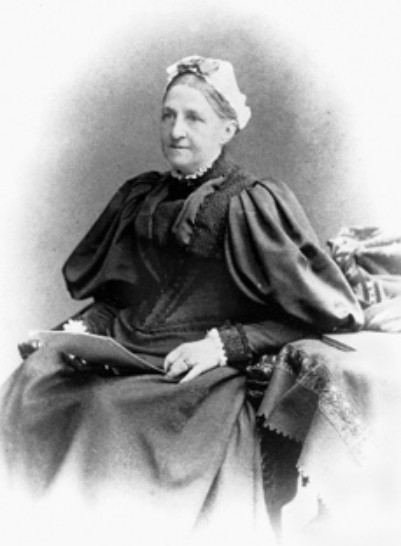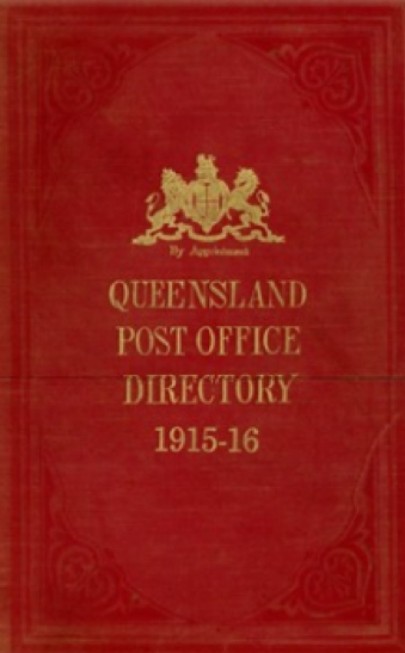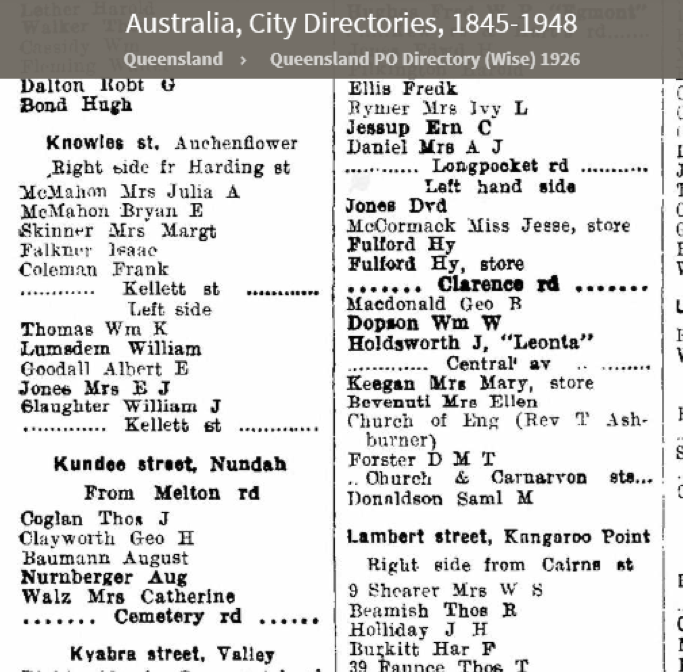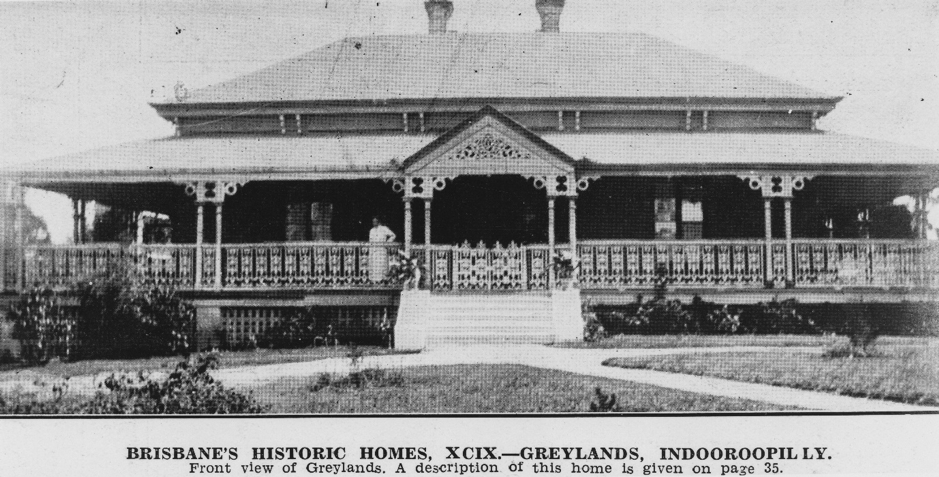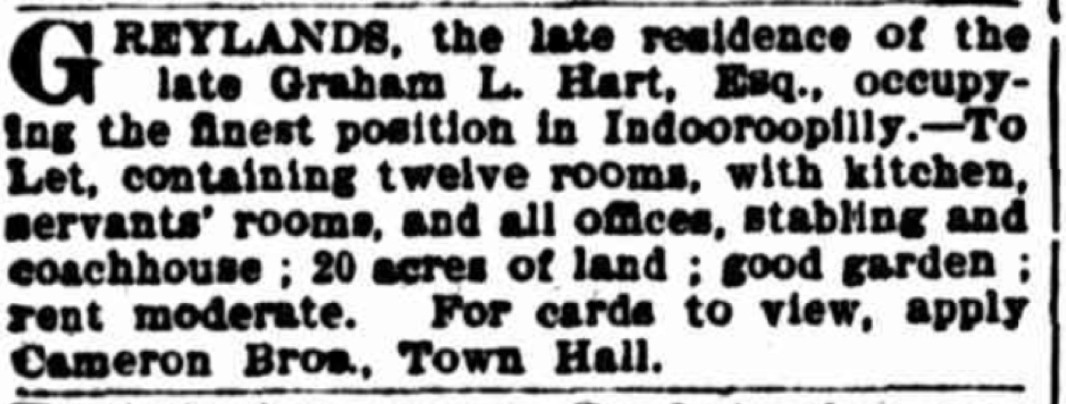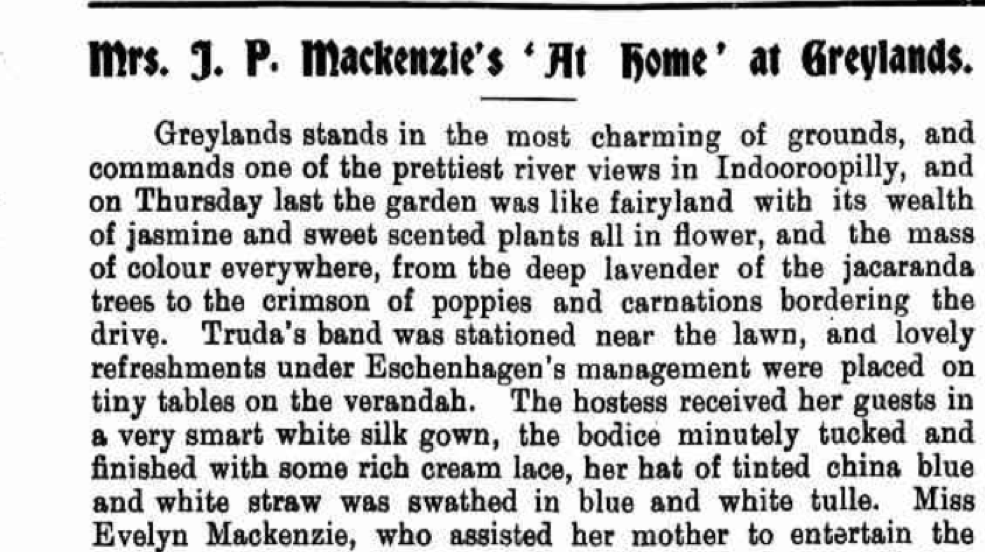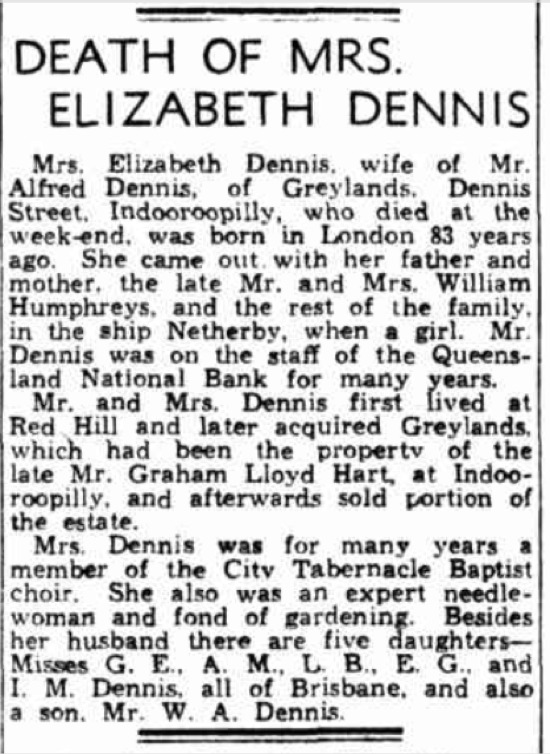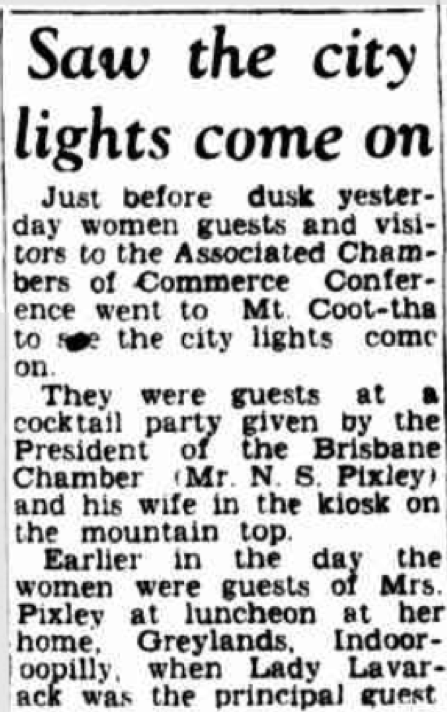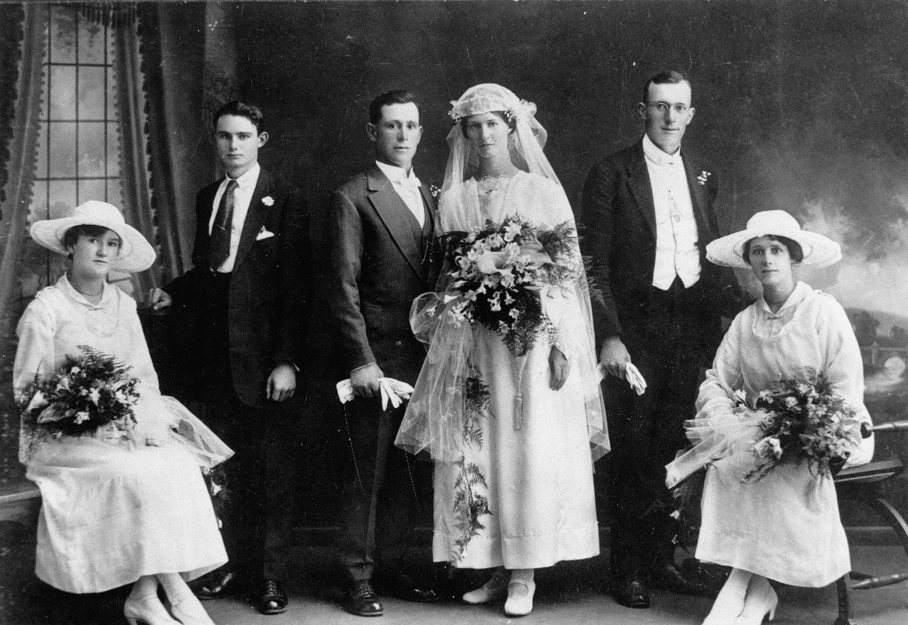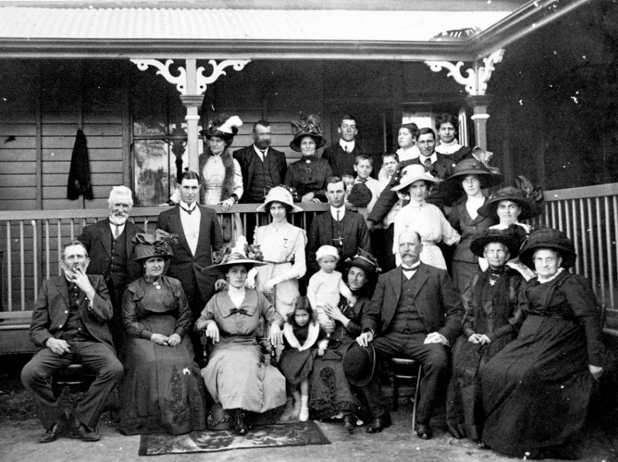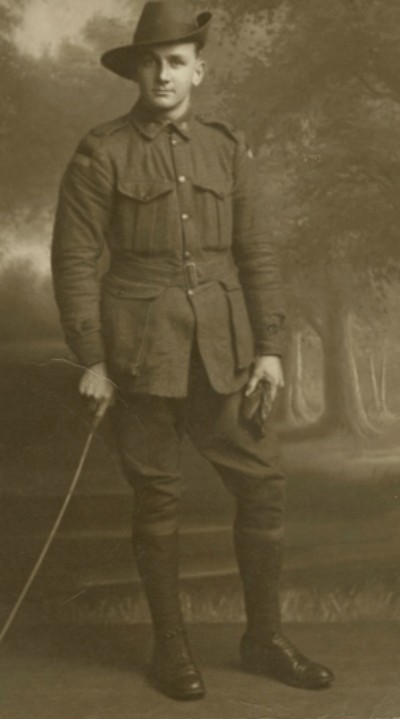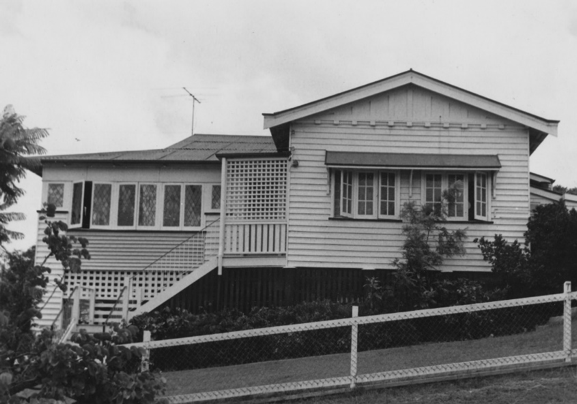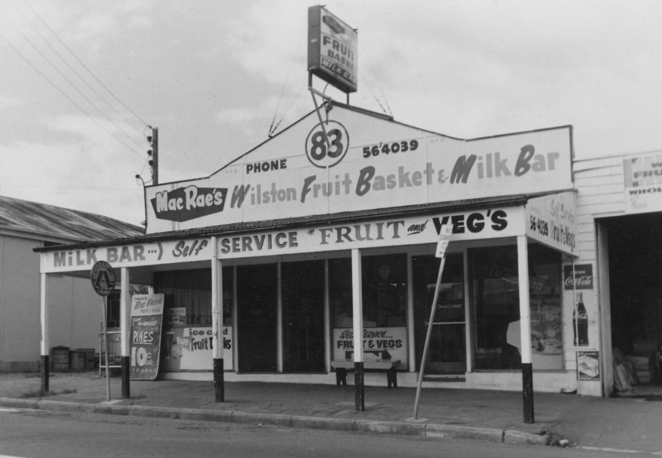Who lived in your house?
By Christina Ealing-Godbold, Research Librarian, Information Services | 24 August 2020
Who lived in your house – The Inhabitants
A house is not a home without people and their stories. Enrich the history of your home by finding out who lived there and share their joys, triumphs and difficulties. Try and find the answers to questions like:
- What events unfolded in the house?
- Did the house have a name?
- Were the inhabitants listed in the Post Office Directories and the Electoral rolls?
- What did the newspaper reports have to say about your house?
- Was history made in your house?
- Who was married in your house?
- Which soldier left to go to war from the front door of your house?
Finding the stories of the people who lived in the house is the most rewarding aspect of the house history journey.
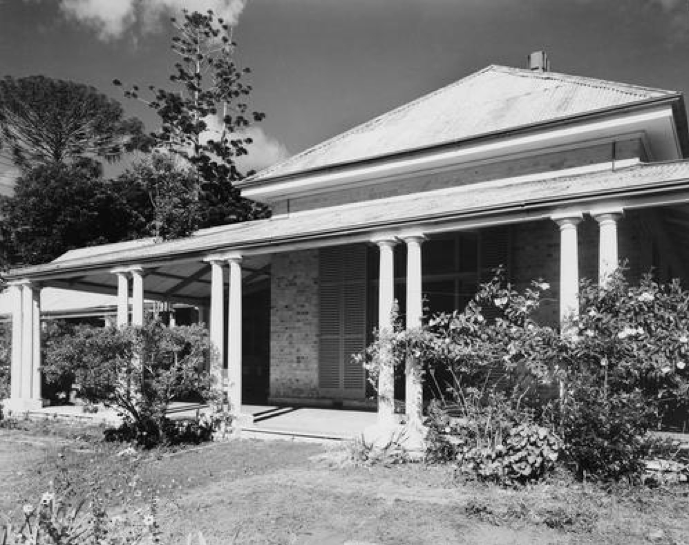
Ormiston House in Ormiston, Queensland, 1958, John Oxley Library, State Library of Queensland, Image number: 6523-0001-0034 - home of early sugar planter Captain Louis Hope, the pioneer of the sugar industry in Queensland.
Post Office Directories list those who lived in various streets in Brisbane and other cities in Queensland. They were the forerunner of the telephone directory, as those who wished their mail to be delivered to the door needed to register in the directories. The inhabitants of the house did not need to own the house – they could be tenants. The entry in the directory will often also give the occupation of the inhabitant (Head of Household, either male or female) and will sometimes give the name of the house.
These directories are important as they indicate when a house first appeared in the listings, and when other houses nearby were built. The Post Office Directory also provides vital names that can be researched further in local and suburban histories and newspapers.
Below is an excerpt from the 1926 Directory. One of the streets it shows is Knowles St, Auchenflower. We can see a listing for both the right- and left-hand sides of the street (note no numbers) starting from Harding St, and ending at Kellett St:
Post Office Directories are available in book, CD, microfiche and to some degree, online format (Ancestry and Findmypast databases). Different years are available in different formats. State Library of Queensland has a copy of all surviving Post Office Directories, from 1868 - 1949. Unfortunately, there are a few gaps as some volumes didn’t survive, especially in the years prior to 1880.
Electoral Rolls
Electoral Rolls provide similar information and can be used to cross check the person, their occupation and house name. They serve as a second form of evidence. Electoral Rolls are held in various formats, but are most easily searched on Ancestry. Note that the electoral rolls on Ancestry are Commonwealth rolls, 1903-1980.
Queensland State Rolls are also available online in the Findmypast database, and enable searching from 1860 - 1900. Keep in mind that prior to the 20th century, only landowners will be listed on electoral rolls (not tenants).
Trove – newspapers (trove.nla.gov.au)

Trove logo
Trove newspaper searches allow the researcher to find what important events occurred at the house over time – engagements, marriages, divorces, and stories of achievement and triumph. Search Trove for free online from the National Library of Australia at https://trove.nla.gov.au/
Newspapers reported a wide range of events. Search by name of inhabitant, by name of the house and by the name of the street or the estate. Special feature articles on historic homes, like those of F.E.Lord on Brisbane's Historic Homes appeared periodically and provide much information, not only about the historic home, but about the estate that surrounded the home.
The State Library has many photographs of houses, places and of course, Queensland people and events. You might be able to add some further information to your house history by finding more images like the wedding photograph below, taken in Brisbane between 1910 and 1920:
Family photographs for events such as diamond wedding anniversaries or 21st birthdays can provide a useful snapshot of both the family and the house.
You may find portraits of soldiers such as Pte Roy Sergeant of Wilston, who enlisted as an 18 year old labourer:
Roy may have lived in a house like this one in Wilston:
and may well have visited the local Shop in Kedron Brook Road, pictured below.
Build your own story using State Library photographs, suburban histories, and family history resources, so that you have a clear picture of the lives of the people who lived in your home.
Family history resources at the State Library of Queensland include Ancestry, other online databases with records from all over the globe, published family histories, births deaths and marriage records and much more.
State Library of Queensland staff can help you trace the inhabitants of your house and their ancestry. If children were born in Queensland more than 100 years ago, the Queensland Registry Office’s family history research service will reveal how many children were raised in the house. A marriage record will often give an indication that a new home was sought and give an indication of the construction date of a house.
House names
House names are fascinating and can give you a great deal of information about what the family valued. House names often reflected the place where the family originally lived before immigrating, and can provide hints to the life story of the family who built the house.
For example, ‘Saxmundham’ at Newmarket was named after the town in Suffolk where the Thurlow family originated, and “Westwood” at Windsor Road, Red Hill, was named after the Westwood Common near the town of Beverley, Yorkshire where the Spink family lived. ‘High Legh’ in Donaldson Street, Greenslopes, was named after the Cheshire manor house estate of the same name where Mr Bradbury’s father was the head gardener. Many were named after a family property or pastoral holdings, like ‘Maroonda’ in Hendra, pictured below.
House names can be found in Post Office Directories, Electoral Rolls, Detail Plans and indeed, are often listed as an address in the newspaper. Names were also made up from those who lived in the house and of course, house names could change with new owners.
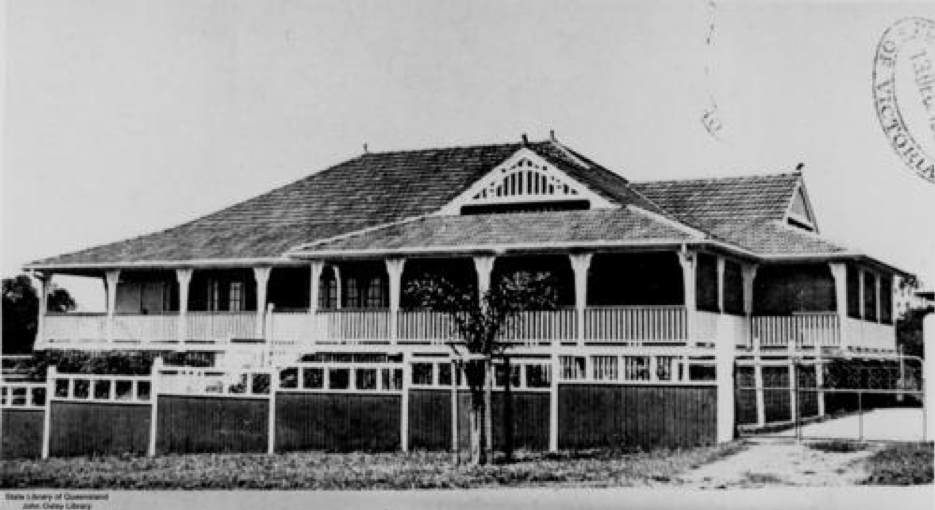
“Maroonda”, the residence of Mr R. G. Henderson, in Palm Avenue, Hendra, Brisbane, in 1921, John Oxley Library, State Library of Queensland, Negative number: 94243, Demonstrating Federation styling, the timber house has a gabled, tiled roof and timber-worked verandahs.
Enjoy finding out about the lives of the people who lived in your home. It will undoubtedly enrich your house history and you may find that your family may have much in common with those previous inhabitants.
Visit State Library’s house histories webpage and ensure you know the range of resources that are available for your search. Staff at State Library will help you navigate through these resources and provide suggestions for further research.
Come back soon to read the next blog in this series, which will help you understand how your house and its inhabitants contribute to its community.
#HouseHistoryBlogSeries
[This is blog no. 4 of 5 in the House Histories Blog Series]
More information
House histories - /research-collections/queensland/built-heritage/house-histories
Corley Explorer - https://explorer.corley.slq.qld.gov.au/
One Search - http://onesearch.slq.qld.gov.au/
Ask us - /plan-my-visit/services/ask-us
Comments
Your email address will not be published.
We welcome relevant, respectful comments.
